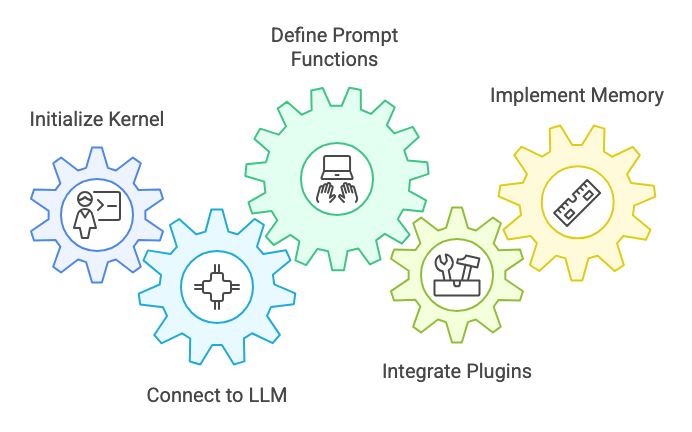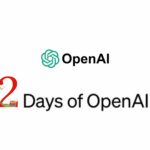The rise of artificial intelligence is transforming how developers build applications, and at the forefront is the Semantic Kernel. This comprehensive Semantic Kernel developer guide empowers you to integrate Large Language Models (LLMs) seamlessly into your projects. Whether you’re a beginner exploring AI-powered tools or an advanced developer aiming for workflow automation and retrieval-augmented generation (RAG), this guide is designed to take you from foundational concepts to cutting-edge techniques.
With detailed code examples, best practices, and use cases like chatbots, content summarization, and dynamic workflows, you’ll gain the skills to create robust AI-powered solutions. Dive into the world of Semantic Kernel and unlock its potential to revolutionize your applications.
Introduction
Humanity is witnessing the dawn of AI-driven transformation. Tools like Semantic Kernel empower developers to integrate state-of-the-art AI capabilities into their projects. Whether you’re building chatbots, automating workflows, or enabling retrieval-augmented generation (RAG), SK offers a robust and flexible framework to get started and scale up.
Semantic Kernel supports modern programming languages like Python, C#, and Java. This guide focuses on Python, leveraging its simplicity and extensive library ecosystem. By the end of this guide, you’ll be equipped to implement real-world applications with confidence.
Setting Up the Environment for Semantic Kernel Development
Prerequisites
- Python 3.7+
- IDE: Visual Studio Code (recommended) with extensions like Polyglot and Semantic Kernel Tools.
- Database: PostgreSQL, Weaviate, or LanceDB for memory storage.
- AI Service Key: OpenAI or Azure OpenAI API keys.
- Jupyter Notebook: Optional for interactive exploration.
Installation
Install the required Python packages:
pip install --quiet --upgrade semantic-kernel openai psycopg2 weaviate-client lancedbCore Concepts
1. Understanding the Kernel: The Core of Semantic Kernel Development
The Kernel is the heart of SK, orchestrating workflows, plugins, and services.
import semantic_kernel as sk
kernel = sk.Kernel()2. Connectors: Seamlessly Integrating AI Services with Semantic Kernel
Connectors link SK to AI services. Here’s how to set up OpenAI and Azure OpenAI:
from semantic_kernel.connectors.ai.open_ai import OpenAIChatCompletion, OpenAITextCompletion
kernel.add_service(
OpenAIChatCompletion(
service_id="chat",
ai_model_id="gpt-3.5-turbo",
api_key="your_openai_api_key"
)
)3. Prompt Functions: The Powerhouse of Semantic Kernel Applications
Prompt functions utilize natural language input to interact with LLMs.
prompt = "Generate a poem about {{$input}}."
function = kernel.create_function_from_prompt(prompt=prompt, function_name="generate_poem")
response = await kernel.invoke(function, input="the beauty of nature")
print(response)4. Plugins: Enhancing Functionality in Your Semantic Kernel Projects
Plugins bundle reusable functions. Here’s an example:
Custom Plugin: Controlling Lights
from semantic_kernel.functions import kernel_function
from typing import Annotated
class LightsPlugin:
lights = [{"id": 1, "name": "Lamp", "is_on": False}]
@kernel_function(name="get_lights", description="List light states.")
def get_lights(self) -> Annotated[str, "Current light states"]:
return self.lights
@kernel_function(name="toggle_light", description="Toggle a light's state.")
def toggle_light(self, id: int) -> Annotated[str, "Updated light state"]:
for light in self.lights:
if light["id"] == id:
light["is_on"] = not light["is_on"]
return light
return "Light not found."
kernel.add_plugin(LightsPlugin(), plugin_name="Lights")5. Memory in Semantic Kernel: Short-Term and Long-Term Intelligence
Semantic Kernel enables both short-term and long-term memory storage.
Using PostgreSQL for Memory
import psycopg2
from semantic_kernel.memory.semantic_text_memory import SemanticTextMemory
from semantic_kernel.memory.postgres_memory_store import PostgresMemoryStore
conn = psycopg2.connect(database="sk_memory", user="user", password="password")
store = PostgresMemoryStore(conn)
memory = SemanticTextMemory(storage=store)
await memory.save_information(collection="my_data", id="1", text="SK is amazing!")
results = await memory.search("my_data", "What is amazing?")
print(results)Step-by-Step Guide to Use Cases
1. Building a Chatbot
Integrate SK to build context-aware chatbots.
prompt = "Respond to the user's input while maintaining context: {{$input}}."
chatbot_function = kernel.create_function_from_prompt(prompt, "chatbot_response")
response = await kernel.invoke(chatbot_function, input="What is SK?")
print(response)2. Content Summarization
Summarize lengthy documents with SK.
prompt = "Summarize the following text: {{$input}}."
summarizer = kernel.create_function_from_prompt(prompt, "summarizer")
response = await kernel.invoke(summarizer, input="Long text here...")
print(response)3. Workflow Automation
Chain plugins to automate processes like scheduling.
from semantic_kernel.events.function_invoked_event_args import FunctionInvokedEventArgs
def chain_functions(kernel, invoked_function_info: FunctionInvokedEventArgs):
output = str(invoked_function_info.function_result)
invoked_function_info.arguments['input'] = output
invoked_function_info.updated_arguments = True
kernel.add_function_invoked_handler(chain_functions)Step-by-Step Guide
Basic Implementation

- Initialize Kernel: Start by creating and configuring the Kernel.
- Connect to LLM: Use connectors to integrate with AI services like OpenAI.
- Define Prompt Functions: Write functions for specific tasks.
- Integrate Plugins: Build or use pre-existing plugins for extended capabilities.
- Implement Memory: Store and retrieve contextual information.
Practical Use Cases
- AI-Powered Chatbots: Build conversational agents with memory and context awareness.
- Content Summarization: Use prompt functions to distill lengthy documents.
- Data Analysis: Query databases and retrieve insights using natural language.
- Workflow Automation: Automate complex processes by chaining multiple functi
Advanced Features with Examples
1. Chaining Plugins
Create advanced workflows by chaining plugins dynamically.
response = await kernel.invoke(
[plugin1["function1"], plugin2["function2"]],
arguments={"input": "Initial input"}
)
print(response)2. Planners
Dynamically plan workflows.
from semantic_kernel.planners.basic_planner import BasicPlanner
planner = BasicPlanner()
plan = await planner.create_plan("Schedule a meeting and send a reminder", kernel)
await planner.execute_plan(plan, kernel)3. Retrieval-Augmented Generation (RAG)
Enhance queries using external databases like Weaviate.
Setting up Weaviate
import weaviate
client = weaviate.Client("http://localhost:8080")
client.schema.create_class({"class": "Memory", "properties": [{"name": "text", "dataType": ["text"]}]})Integrating Weaviate into SK
memory_store = WeaviateMemoryStore(client)
memory = SemanticTextMemory(storage=memory_store)
await memory.save_information(collection="data", id="1", text="RAG example.")
results = await memory.search("data", "Retrieve RAG example.")
print(results)Best Practices and Optimization
- Efficient Prompt Design: Minimize token usage by using concise prompts.
- Database Choice: Use Weaviate or LanceDB for advanced vector search needs.
- Performance Monitoring: Track API calls and database queries to optimize cost and latency.
- Error Handling: Implement retries for database or API failures.
Conclusion
Semantic Kernel offers developers a powerful and flexible framework to integrate advanced AI capabilities into their applications. From building chatbots to implementing retrieval-augmented generation, SK simplifies complex workflows while remaining extensible.
Explore the official documentation for more examples and updates. Start building your AI-powered solutions today!
Explore More
- AI Services: Explore our AI services for more details.
- Digital Product Development: Discover our digital product development expertise.
- Design Innovation: Learn about our design innovation approach.





Leave a Reply